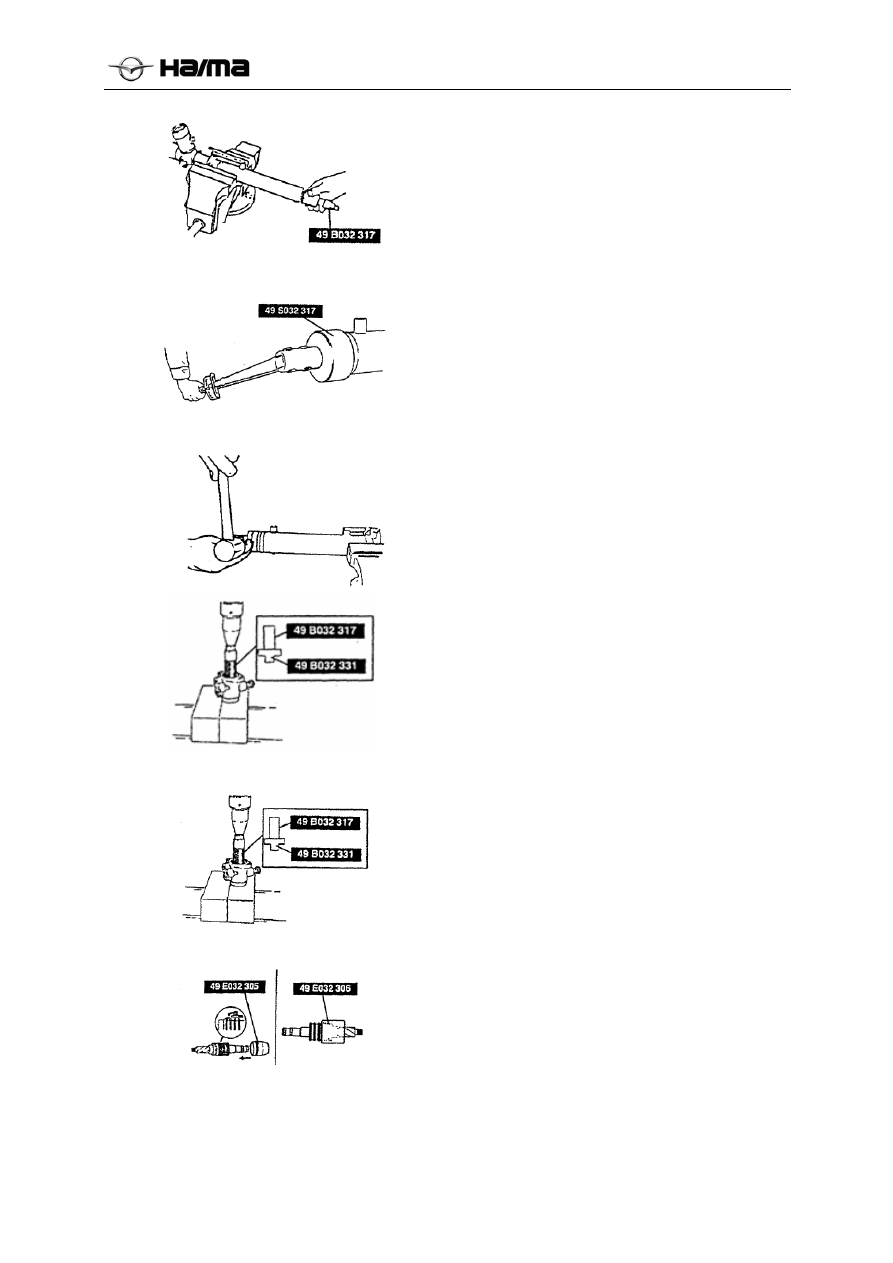Haima S5. Chassis System. Instruction - part 4

Steering system 2E-15
Keypoints for installing the hoop
1. Apply a little of lubricating oil to “O” ring and
U seal gasket.
2. Install “O” ring and U seal gasket on the socket
sleeve.
3. Install them on the steering gear with a special
tool.
4. Install the hoop with a special tool.
5. Fix the hoop on cylinder body with a chisel.
Keypoints for installing the oil seal
1. Apply the appropriate amount of grease to new
oil seal.
2. Press in the new oil seal with a special tool.
Keypoints for installing upper bearing
1. Apply the appropriate amount of grease to new
upper bearing.
2. Press in the bearing with a special tool.
1. Attach a new seal ring to the valve body of
gear shaft with a special tool.
2. After the installation, place the seal ring in
position with a special tool.
3. Install the snap ring.